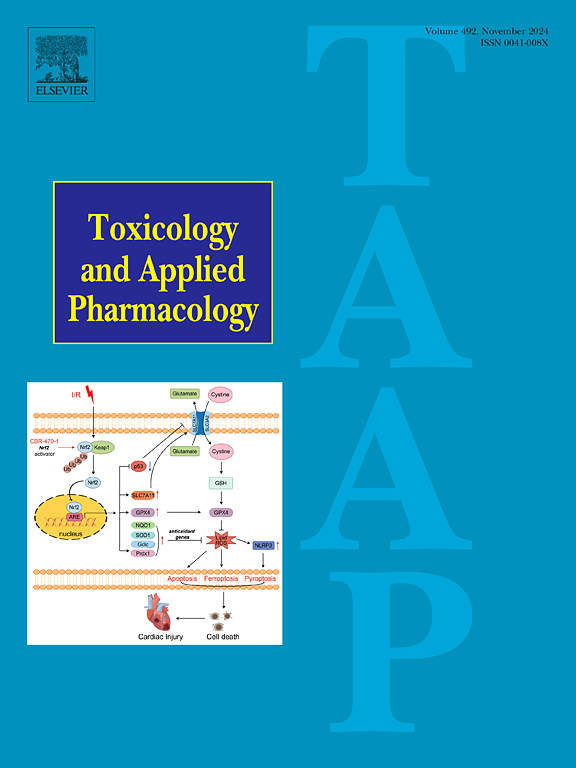Sex differences in aristolochic acid I-induced nephrotoxicity in mice and the effect of estradiol
IF 3.3
3区 医学
Q2 PHARMACOLOGY & PHARMACY
引用次数: 0
Abstract
Aristolochic acid I (AAI), the most prominent component of aristolochic acids and found in nearly all aristolochic herbs, has been demonstrated significant nephrotoxicity. In this study, an acute nephrotoxicity model of AAI mice was established by a single dose injection of AAI. It was observed that there are differences of the sensitivity to AAI nephrotoxicity in female and male mice, with male mice exhibiting nephrotoxic effects even at lower doses. After the administration of estradiol (E2), serum levels of creatinine and urea nitrogen in male mice were observed to decrease. We used UPLC-MS/MS to determine the pharmacokinetics and renal tissue distribution of AAI and its metabolite aristololactam I (ALI). It was found that AAI had a longer plasma half-life in female mice, while the content of ALI in renal tissue of male mice was much higher than that in female. The administration of E2 was found to extend the half-life of AAI and reduce the levels of ALI in the kidneys of male mice. The proposed mechanism may involve the reduction of renal OATs transporter activity by E2, leading to decreased concentrations of ALI in the renal tubules. This reduction may mitigate its toxic effects on epithelial cells and diminish the production of its harmful metabolites, thereby alleviating AAI-induced nephrotoxicity.
求助全文
约1分钟内获得全文
求助全文
来源期刊
CiteScore
6.80
自引率
2.60%
发文量
309
审稿时长
32 days
期刊介绍:
Toxicology and Applied Pharmacology publishes original scientific research of relevance to animals or humans pertaining to the action of chemicals, drugs, or chemically-defined natural products.
Regular articles address mechanistic approaches to physiological, pharmacologic, biochemical, cellular, or molecular understanding of toxicologic/pathologic lesions and to methods used to describe these responses. Safety Science articles address outstanding state-of-the-art preclinical and human translational characterization of drug and chemical safety employing cutting-edge science. Highly significant Regulatory Safety Science articles will also be considered in this category. Papers concerned with alternatives to the use of experimental animals are encouraged.
Short articles report on high impact studies of broad interest to readers of TAAP that would benefit from rapid publication. These articles should contain no more than a combined total of four figures and tables. Authors should include in their cover letter the justification for consideration of their manuscript as a short article.

 求助内容:
求助内容: 应助结果提醒方式:
应助结果提醒方式:


